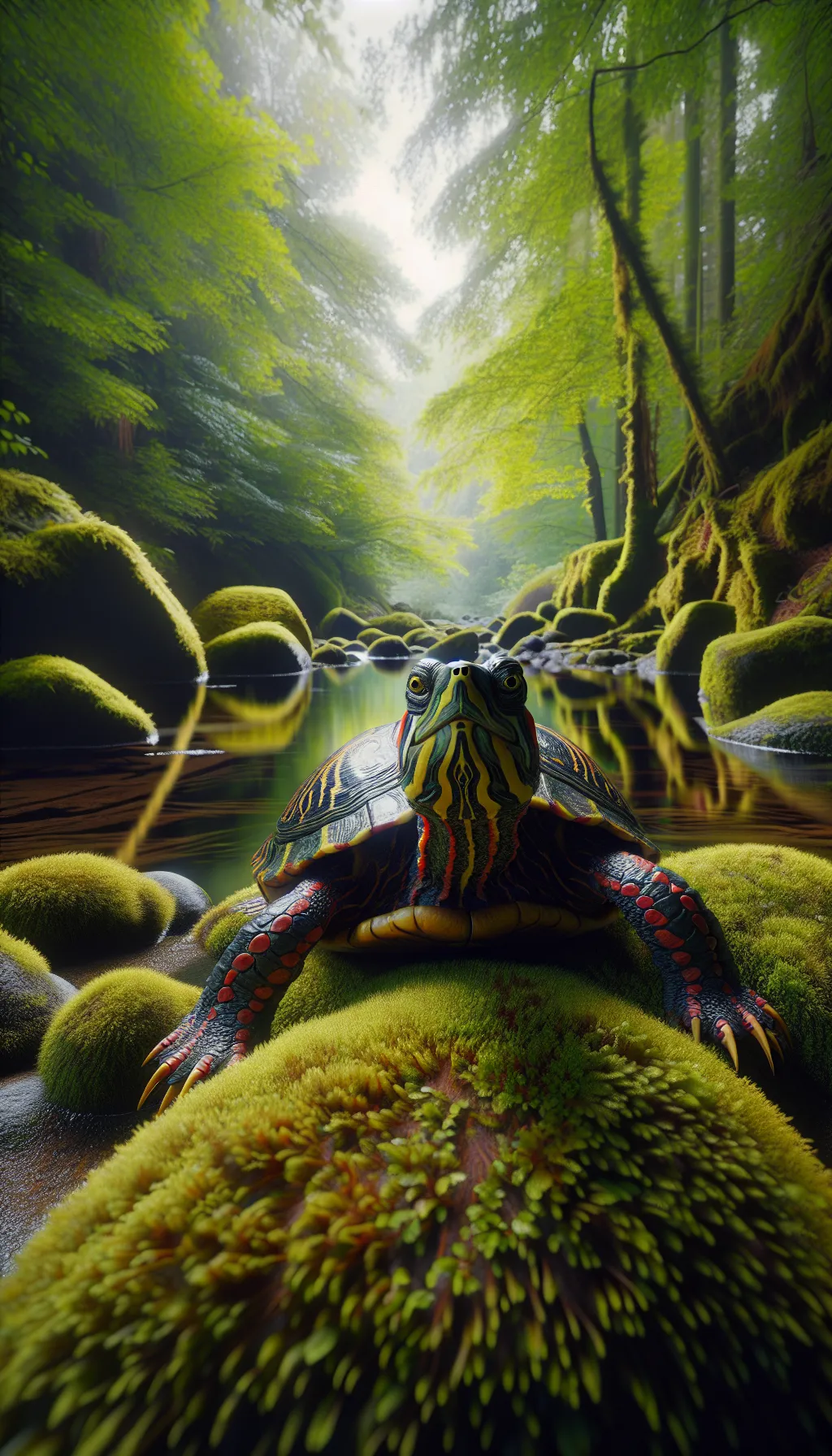The Painted Turtle
The Painted Turtle is a species of freshwater turtle found in North America known for its colorful and distinctive shell markings. Their shells are typically dark with red, orange, and yellow stripes or spots, while their skin and underside are olive to black. Painted Turtles have webbed feet and are strong swimmers, often seen basking on logs or rocks near the water's edge. They have a varied diet that includes aquatic vegetation, insects, and small fish.

| Painted Turtle | |
|---|---|
| Size | 4-10 inches (10-25 cm) |
| Weight | 0.35-2.25 pounds (0.16-1.02 kg) |
| Speed | 4 mph (6.4 km/h) |
| Key Strength | Stealth and quick movements |
| Biggest Weakness | Vulnerable undershell |
| Scientific Name | Chrysemys picta |
| Family | Emydidae |
| Habitat | Freshwater ponds, lakes, marshes |
| Geography | North America |
| Diet | Omnivorous - eats plants, insects, small fish |
| Lifespan | 4 years - 25 years |

The Painted Turtle
The Painted Turtle is a species of freshwater turtle found in North America known for its colorful and distinctive shell markings. Their shells are typically dark with red, orange, and yellow stripes or spots, while their skin and underside are olive to black. Painted Turtles have webbed feet and are strong swimmers, often seen basking on logs or rocks near the water's edge. They have a varied diet that includes aquatic vegetation, insects, and small fish.
Fun Fact: The Painted Turtle is able to absorb oxygen through its skin while submerged underwater.
| Painted Turtle | |
|---|---|
| Size | 4-10 inches (10-25 cm) |
| Weight | 0.35-2.25 pounds (0.16-1.02 kg) |
| Speed | 4 mph (6.4 km/h) |
| Key Strength | Stealth and quick movements |
| Biggest Weakness | Vulnerable undershell |
| Scientific Name | Chrysemys picta |
| Family | Emydidae |
| Habitat | Freshwater ponds, lakes, marshes |
| Geography | North America |
| Diet | Omnivorous - eats plants, insects, small fish |
| Lifespan | 4 years - 25 years |
Painted Turtle Matchups
We use AI to simulate matchups between the Painted Turtle and other animals. Our simulation considers size, strength, and natural predatory behaviors to determine the most likely outcome.
Painted Turtle: Diet, Predators, Aggression, and Defensive Behaviors
What do Painted Turtles eat?
Painted Turtles are omnivores, meaning they eat both plants and animals. Their diet primarily consists of aquatic plants, insects, small fish, crustaceans, and algae. They also consume carrion and occasionally feed on small amphibians.
Do Painted Turtles have any predators?
Yes, Painted Turtles have several natural predators, including raccoons, foxes, skunks, crows, herons, and larger fish. In some areas, humans also pose a threat to Painted Turtles due to habitat destruction, pollution, and illegal collection for the pet trade.
Are Painted Turtles aggressive?
Painted Turtles are generally not considered aggressive towards humans or other animals, though they may display defensive behavior when threatened or cornered. They are known to retreat into their shells to protect themselves when feeling threatened.
Do Painted Turtles fight?
While Painted Turtles may engage in disputes over territory, food, or mates, they are not inherently aggressive towards one another. These interactions typically involve displays of dominance, such as head bobbing, shell ramming, and biting, rather than physical fighting.
How do Painted Turtles defend themselves?
Painted Turtles have several defense mechanisms to protect themselves from predators or threats. Their primary defense is to retreat into their shells, using their hinged plastron (lower shell) to close off the vulnerable parts of their body. They may also release musk from their cloacal glands as a deterrent to potential predators.
What is the biggest weakness of Painted Turtles in a fight?
The biggest weakness of Painted Turtles in a fight is their relatively slow movement on land compared to their agility in water. While they are adept swimmers and can move quickly through aquatic environments, Painted Turtles are not as agile on land, making them vulnerable to faster predators or threats when out of the water.
Fun Fact: Painted Turtles are known to hibernate during the winter months, usually in the mud at the bottom of ponds or lakes.
Fun Fact: Female Painted Turtles often lay their eggs in sandy soil near water, and the temperature of the nest determines the sex of the hatchlings.










